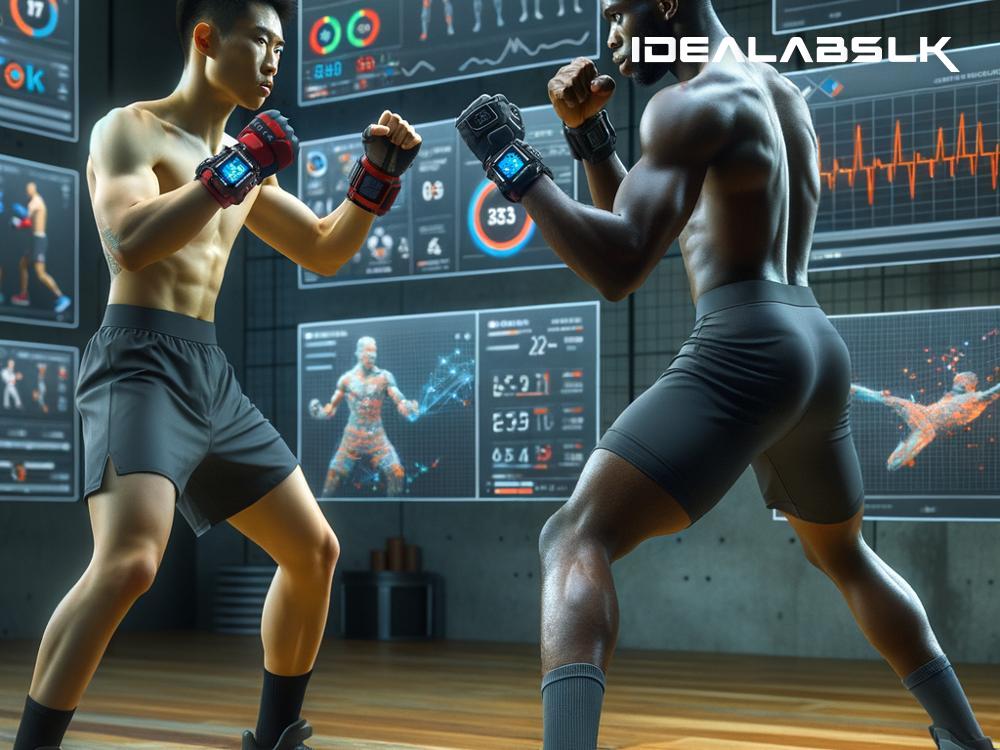How AI is a Game-Changer in Preventing Injuries Among Fighters with Predictive Analysis
In the high-stakes world of combat sports, where every punch, kick, or grapple could lead to victory or a career-ending injury, staying a step ahead isn't just a tactic—it's a necessity. Interestingly, the latest contender stepping into the ring isn't a fighter but a technology: Artificial Intelligence (AI). It's transforming how athletes train, compete, and stay healthy. Specifically, AI's role in predictive analysis is revolutionizing injury prevention among fighters, ensuring they can spar another day. Let's dive into how this is happening.
Understanding Predictive Analysis in AI
Before we get into the nitty-gritty, let's break down predictive analysis. Imagine having a crystal ball that could forecast the future, warning you of potential mishaps. That's predictive analysis, albeit driven by data and algorithms rather than magic. It involves feeding historical data into AI systems, which then identify patterns and predict future outcomes. In sports, these outcomes could range from the likelihood of a team winning to the risk of a player getting injured based on various factors.
The Punching Power of Data
The foundation of AI's predictive prowess in injury prevention is data—lots of it. For fighters, this includes everything from their training routines, diet, sleep patterns, heart rate variability, past injuries, and even their psychological state. This data doesn't just sit idly; it's continuously analyzed to tailor training programs that mitigate injury risk. For instance, if the AI identifies a fighter has a higher risk of a knee injury due to past issues and current training loads, their regimen can be adjusted to strengthen that area while avoiding overexertion.
Spar Smarter, Not Harder: AI in Training
Training for any combat sport is a delicate balance between pushing limits and not crossing the line into excessive wear and tear on the body. AI leverages predictive analysis to guide fighters and their coaches in designing smarter training regimens. It can suggest optimal training loads, recovery times, and even specific exercises to enhance performance while minimizing injury risks. This precision ensures fighters are battle-ready without being battle-worn before stepping into the ring.
In the Heat of the Fight: Real-time Predictive Insights
Imagine if a coach could receive real-time data during a match, offering insights on a fighter's fatigue levels, stress indicators, or the potential for an injury based on their movements and vitals. This isn't a scene from a sci-fi movie—it's becoming a reality. Wearable technology equipped with sensors and powered by AI is making it possible to monitor fighters in real-time. This data can alert a corner to throw in the towel if a fighter is at a high risk of injury, potentially saving them from long-term damage.
Recovery and Rehabilitation: AI's Aftercare
The role of AI doesn't stop once the fight is over or an injury occurs. In the realm of rehabilitation, predictive analysis helps in crafting personalized recovery plans. By understanding an athlete's unique physiology and the specifics of their injury, AI can suggest the most effective recovery protocols, monitor progress, and predict how quickly they can safely return to training. This bespoke approach speeds up recovery while ensuring the risk of re-injury is kept to a bare minimum.
The Knockout Punch: Predictive Analysis as a Prevention Pillar
In essence, predictive analysis through AI is like having a highly skilled corner team that's always a step ahead, armed with insights drawn from a vast array of data. It's making training safer, fights fairer, and recoveries faster. More importantly, it's ensuring fighters have longer, healthier careers in a sport that's notoriously unforgiving on the body.
Closing Thoughts
The integration of AI and predictive analysis in combat sports is still in its early rounds, with much more potential to be unleashed. As technology evolves and more data becomes available, the ability to prevent injuries through predictive insights will only grow stronger. It's a thrilling time, not only for tech enthusiasts but for fighters, coaches, and fans alike. The combination of human spirit and artificial intelligence is proving to be a formidable duo, one that's set to redefine the future of combat sports. In this arena, the best defense might just be a good predictive analysis.
In wrapping up, AI's impact on preventing injuries in fighters through predictive analysis is not just about keeping athletes safe—it's about enhancing the very essence of combat sports. By ensuring fighters can train smarter, compete with confidence, and recover efficiently, AI is safeguarding the future of the sport itself. It's a testament to how technology, when used wisely, can elevate humanity to new heights, even in the ancient and honorable arena of combat.

